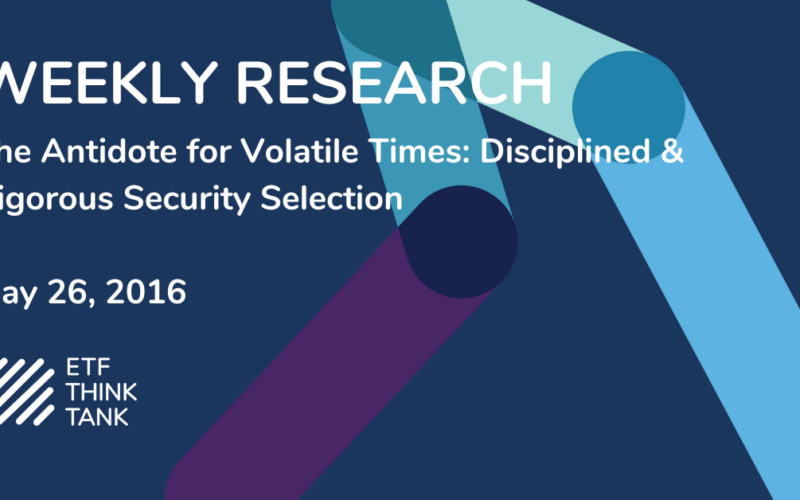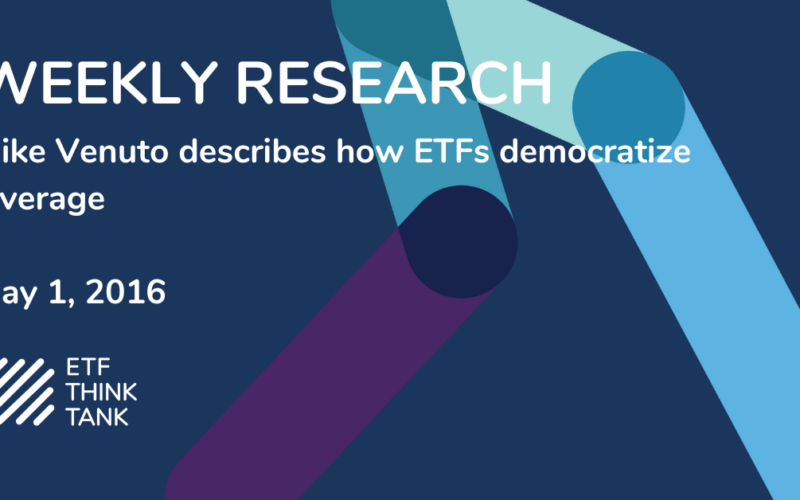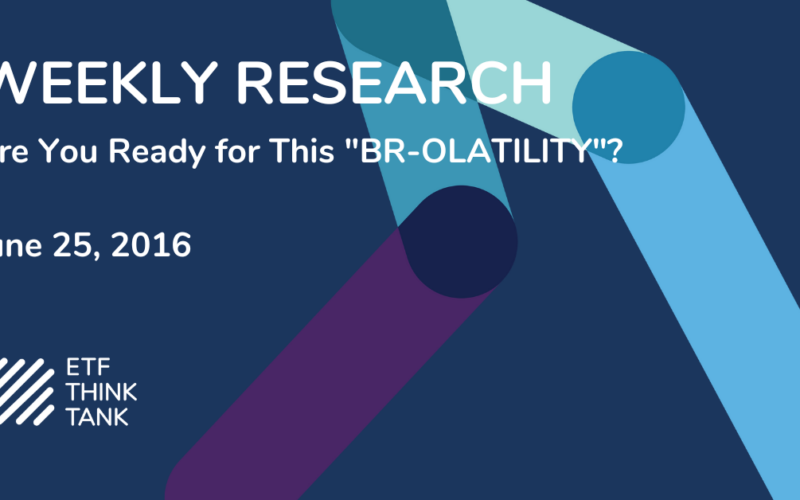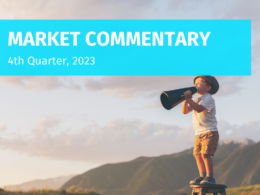Now and Then…
With over one third of 2016 behind us, the markets have offered little to be excited about in terms of returns. We have seen some massive drawdowns in the US and Developed markets and some equally strong recoveries. In previous commentaries, we have proposed that the US equity market is fundamentally overvalued unless further government-sponsored stimulus is applied. It now appears that not only is future stimulus unlikely, but further monetary tightening is probable this summer. So with that realization, volatility is expected for the market.
Although this is exactly what we expected at the beginning of the year, the violent recoveries and low level of implied volatility have been a surprise. (Do you remember the phrase “irrational exuberance”?) We maintain our commitment to diversification and protection of wealth in what we believe will be an increasingly volatile environment. Additionally, we continue to seek fundamentally sound investments, through our rigorous security selection process, which will be the main subject of this commentary.
So How Have We Done?
In past commentaries we have noted that this year diversification is working. Asset class correlation has normalized and we are no longer in an environment where everything goes up and/or down together. This has substantially benefited our flagship wealth preservation strategy. The Toroso Neutral Portfolio was up 4.6% net of fees through April 30th, with limited volatility. Our income strategy has also navigated the choppy waters well; the Toroso Target 5% Income Portfolio was up 2.5% net of fees through April 30th, while maintaining a consistent annualized yield of 5.1%.
Unfortunately, our two growth strategies are underperforming year to date and have been negatively affected by the markets irrational optimism. The Toroso Sector Opportunity Portfolio was down -2.2% through April 30th, mainly because our volatility hedge detracted from returns during the rally in March. Often referred to as the price of insurance. The Toroso Global Alpha Portfolio was down -0.6% through April 30th, which can be attributed, again, to hedges imbedded in the ETFs we utilize. However, we remain confident that the portfolios are positioned well, for the volatile markets ahead, with fundamentally attractive securities.
What We Do
When we started Toroso in 2012, one of our main goals was to provide thoughtful ETF research and advice on ETF security selection that could be as comprehensive as what active managers commit to individual equities. Over the past few years we have developed software tools and processes to dig deeper into the key ETF behaviors and statistics; such as fundamentals, true cost, ownership or passive influence, premium or discount to NAV, performance ratios, risk metrics and index construction.
Our security selection process begins with the benchmarks embedded in our asset allocation, then we seek out themes and other qualitative concepts that may enhance the core benchmark exposure, and finally we refine those ideas through quantitative data using our proprietary software tools and processes. In this commentary we want to share two examples of how these qualitative and quantitative processes work.
Is this Porridge Too Hot?
We have continually discussed the current and anticipated volatility of the US equity markets this year. With that in mind, an obvious qualitative candidate for inclusion in our portfolios are ETFs focused on minimum volatility. Apparently, we are not alone in this desire to protect against volatility; the iShares MSCI USA Minimum Volatility ETF (USMV) has seen substantial inflows this year.
“In the year-to-date period through April 29, the iShares MSCI USA Minimum Volatility ETF (USMV | A-71) has taken in $4.7 billion in investor capital, second only to $6.2 billion for GLD, according to FactSet data. … As the name suggests, the fund aims to minimize the volatility of its portfolio. It does this by holding a basket of stocks that together have low-volatility characteristics. Unlike the competing PowerShares S&P 500 Low Volatility ETF (SPLV | A-58)—which simply holds the 100 least volatile stocks in the S&P 500— USMV considers the correlations between various stocks to come up with its optimized mix.”
ETF.com May 3, 2016
On its face, this ETF appears to be the perfect candidate to solve for the macro-economic problem we have been describing all year. We conducted our quantitative process to evaluate the position and, in our opinion, discovered it is not the right ETF to limit volatility. Sometimes a rigorous security selection process benefits a portfolio by avoiding a potentially disastrous investment rather than finding a superior one. That is the case with USMV and here are three concerns our research shows:
- Fundamentally Overvalued – Much of the market volatility stems from the belief that interest will rise; in a rising rate environment P/Es tend to contract. The P/E of USMV is 20.1 or at a higher level than the S&P 500 (SPY) at 17.8 and even more frightening higher than the US Growth (IVW) at 19.7. Put simply, can a fundamentally overvalued portfolio lower volatility when the market corrects?
- The Herd Creates Bubbles – On average, ETFs own about 4.6% of every US public equity. On average, the names in USMV are 5.6% owned by ETFs. When passive ownership creeps above normal levels we have found this to indicate a brewing bubble. Similar metrics were present with REITs in 2013 and with MLPs in 2015. Also, the top position in the ETF is Newmont Mining (NEM), which is also a top position in the Gold Miners ETF (GDX). GDX and NEM are extremely volatile and many holdings like this appear counterintuitive for USMV.
- Factor Contradiction – The chart below compares USMV to other ETFs with the most overlap of holdings by weight. How is it possible that an ETF focused on Minimum Volatility can have so much overlap with an ETF focused on Quality Factors, an ETF focused on Momentum factors and a Mega Cap ETF, which is, essentially, a size factor? The answer lies in the ETF.com quote above; “USMV uses optimizations and other constraints to build the portfolio and limit tracking error.” Our fear is that the end result is a portfolio that appears minimum volatility in good markets but may not provide any protection in a true downturn.
This analysis of USMV shows how our security selection process can help avoid ETFs that qualitatively meet our investment objective but quantitatively are rejected.
This Porridge is Just Right
Now for an example of an ETF that meets both our qualitative and quantitative criteria. The Direxion Insider Sentiment ETF (KNOW) has been a core exposure in the Toroso Global Alpha portfolio for a few years. Our original thesis focused on the historical outperformance of companies that have elevated levels of disclosed insider buying. At time of initial purchase, the fundamentals were in line with the benchmark and the active-share generated versus the S&P 1500 was 89%, thereby meeting our quantitative requirements. (Active-share refers to the percentage of the ETF that is considered different than the benchmark to which it is compared.) KNOW has been a successful investment that we continue to evaluate and research.
That research has led us to evaluate another aspect of KNOW that is consistent with other Environment, Social and Governance (ESG) themes we are researching. The index behind KNOW does two characteristic based screens of the S&P 1500 universe. The first is a forensic accounting screen to help avoid fraud and other malfeasance, the second looks for companies where the insiders/management are personally investing in the company.
These two characteristics represent core concepts behind the G in ESG. Strong corporate governance has historically been an ESG factor that can benefit the performance of securities, but more importantly avoiding companies with accounting irregularities can help lower volatility during bear markets. Remember in 2008, many of the now bankrupts mega cap companies practiced creative accounting (There was a movie made about one!).
We have continued to add to our KNOW position as our attention has turned to more defensive positions to combat volatility. The fundamentals remain attractive with a P/E of 16.7 and an active-share that is now 90%.
Why We Do It
The well-known and often cited 1991 study by Gary Brinson, Brian Singer, and Gilbert Beebower titled Determinants of Portfolio Performance shows that asset allocation accounts for as much as 91% of the average investor’s returns. This and other studies are based on replacing benchmarks with active managers and are somewhat antiquated to the ways investing with ETFs is done today. We believe that when it comes to building portfolios of ETFs, a rigorous security selection process can have a much more meaningful attribution for three reasons:
- Passive ETFs, like KNOW, can provide superior returns, meaningful coverage of characteristics likely to limit downside volatility, and impactful ESG exposure.
- The security selection process can force the discovery of bubbles like REITs, MLPS or Minimum Volatility. These quantitative revelations have helped us adjust our asset allocation away from irrationally valued assets.
- The data and resources available to evaluate ETFs are still quite limited thereby generating inefficiencies in pricing and valuation. Our proprietary software was built to aid in uncovering these inefficiencies.

The ETF landscape continues to grow and offer new problems and solutions. Toroso remains committed to outcome oriented asset allocations enhanced by our disciplined research and rigorous security selection.
—
Disclaimer — This commentary is distributed for informational and educational purposes only and is not intended to constitute legal, tax, accounting or investment advice. Nothing in this commentary constitutes an offer to sell or a solicitation of an offer to buy any security or service and any securities discussed are presented for illustration purposes only. It should not be assumed that any securities discussed herein were or will prove to be profitable, or that investment recommendations made by Toroso Investments, LLC will be profitable or will equal the investment performance of any securities discussed. Furthermore, investments or strategies discussed may not be suitable for all investors and nothing herein should be considered a recommendation to purchase or sell any particular security. Investors should make their own investment decisions based on their specific investment objectives and financial circumstances and are encouraged to seek professional advice before making any decisions. While Toroso Investments, LLC has gathered the information presented from sources that it believes to be reliable, Toroso cannot guarantee the accuracy or completeness of the information presented and the information presented should not be relied upon as such. Any opinions expressed in this commentary are Toroso’s current opinions and do not reflect the opinions of any affiliates. Furthermore, all opinions are current only as of the time made and are subject to change without notice. Toroso does not have any obligation to provide revised opinions in the event of changed circumstances. All investment strategies and investments involve risk of loss and nothing within this commentary should be construed as a guarantee of any specific outcome or profit. Securities discussed in this commentary and the accompanying chart, if any, were selected for presentation because they serve as relevant examples of the respective points being made throughout the commentary. Some, but not all, of the securities presented are currently or were previously held in advisory client accounts of Toroso and the securities presented do not represent all of the securities previously or currently purchased, sold or recommended to Toroso’s advisory clients. Upon request, Toroso will furnish a list of all recommendations made by Toroso within the immediately preceding period of one year.












